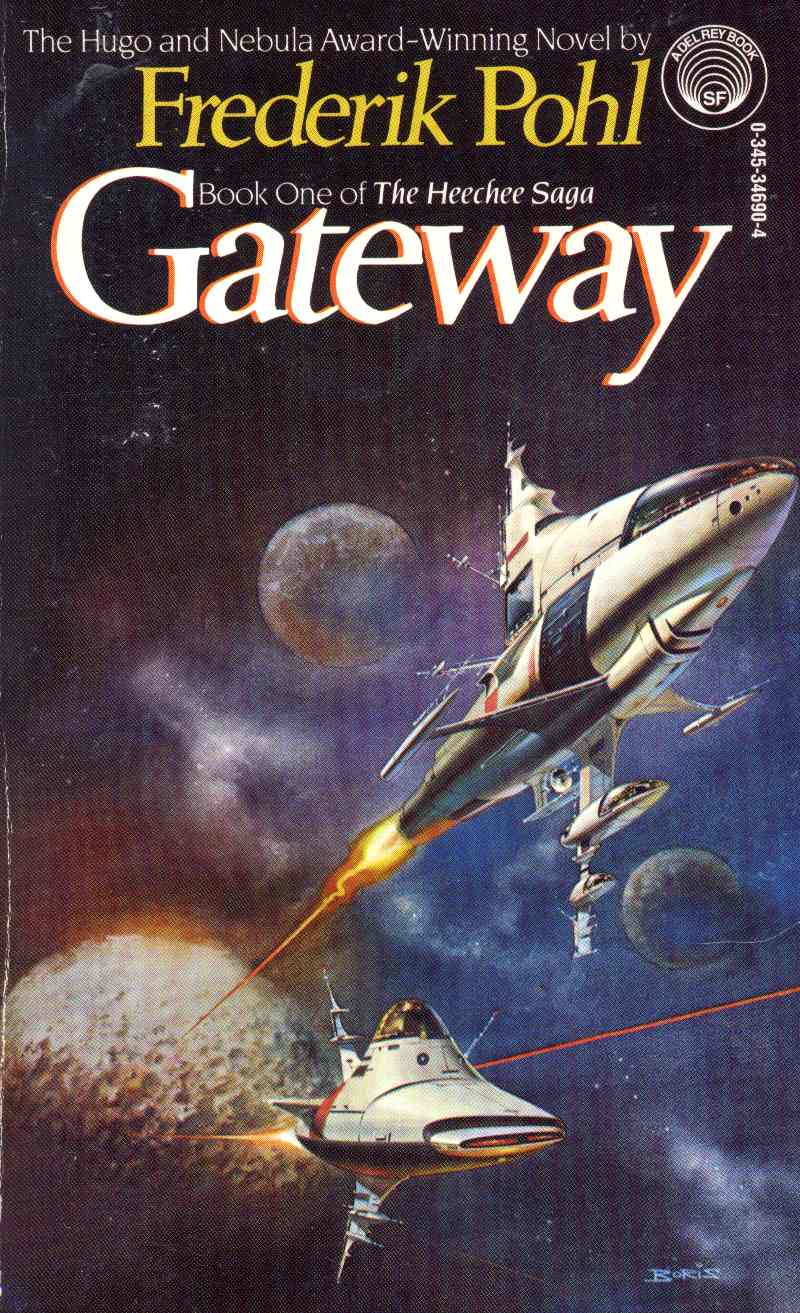 Jack McDevitt
Jack McDevitt2005
Awards: Nebula
Rating: ★ ★ ★ ★ –
This book is great in many ways. It is an exciting detective story with appealing central characters, plenty of outer-space travel, and a satisfying ending.
The story takes place many centuries in the future, after humans have developed faster-than-light travel and colonized several worlds. It is narrated by Chase Kolpath, an interstellar pilot. Kolpath and her boss, Alex Benedict, make up the staff of Rainbow Enterprises, a company that explores remote sections of space, finds ancient artifacts from abandoned space stations and failed colonies, and sells the artifacts to collectors.
It is lucrative. But Kolpath and Benedict are always running afoul of academic archaeologists and historians who view their business as theft, and this tension pervades the entire book.
The book’s adventure begins when a woman asks Rainbow Enterprises to appraise an antique cup with the seal of the starship Seeker on it. The cup turns out to be 9,000 years old and to be, just possibly, a relic of an ancient lost colony.
In researching the cup, Kolpath and Benedict find out that back in the 25th century, Earth was poor, overpopulated, plague-stricken, and ruled by a series of harsh authoritarian regimes. A small group of idealists, the Margolians, fled Earth in two rickety starships, one of which was named Seeker. They may have successfully established a new Eden for themselves or they may have died in the attempt, but, either way, they were never heard from again.
Their fate at first became the subject of novels and films but gradually their memory faded to the point where most people in Kolpath & Benedict’s time now think they are merely a legend and never existed at all.
If the cup can be proven to be from this lost colony, and if it can be used to trace the colony’s location, it could be Rainbow Enterprises’ greatest find ever.
Together, Benedict and Kolpath unravel the secrets of the ancient emigrants. They do library research; they talk to avatars of the long-lost Margolians; they explore remote sections of outer space; they have daring adventures and evade several attempts on their life.
This was the first time I had read anything by Jack McDevitt. I liked it so much I immediately read the prequel, Polaris, which was just as good and which suffered not at all from being read out of order.
Stephen King has called McDevitt “the logical heir to Isaac Asimov and Arthur C. Clarke.” That is a pretty high bar, but King may just be right. McDevitt’s writing is straightforward and the process of putting together the pieces of the puzzle keeps your attention the whole time.
One of the things I liked best about this book (and about Polaris, too) was Chase Kolpath. She is matter-of-fact and thrives under pressure. People naturally call her by her last name. She is a great pilot and her boss respects her as such. Benedict is a better sleuth, but when his investigations repeatedly put their lives in immediate physical danger, she’s always the one who keeps her head clear and gets them out of it. She has a private life and keeps it private, from both her boss and largely from the reader, too. She likes a party and goes out with guys but doesn’t get attached to any one of them.
As a side project, Kolpath decides to watch all the films based on the Margolian legend. Her summaries of the plots of the movies she watches are really quite funny.
I also liked the ways that McDevitt layers fiction within fiction. He puts a quote at the beginning of each of his chapters, for example; sometimes it is from a real (19th-20th century) author, but more often it is from fake fiction or fake philosophy, written sometime during the 21st-26th centuries. Even the fake quotes don’t feel like the rest of McDevitt’s writing, so it really does feel like he is borrowing from other authors.
An earlier version of this review originally appeared on Cheeze Blog.



